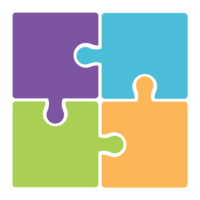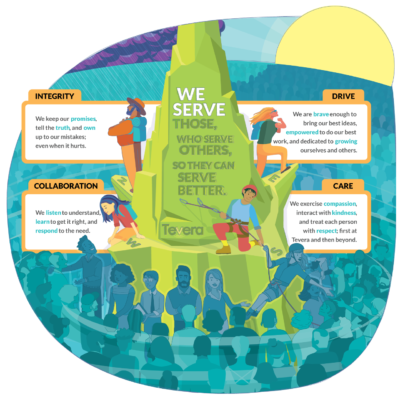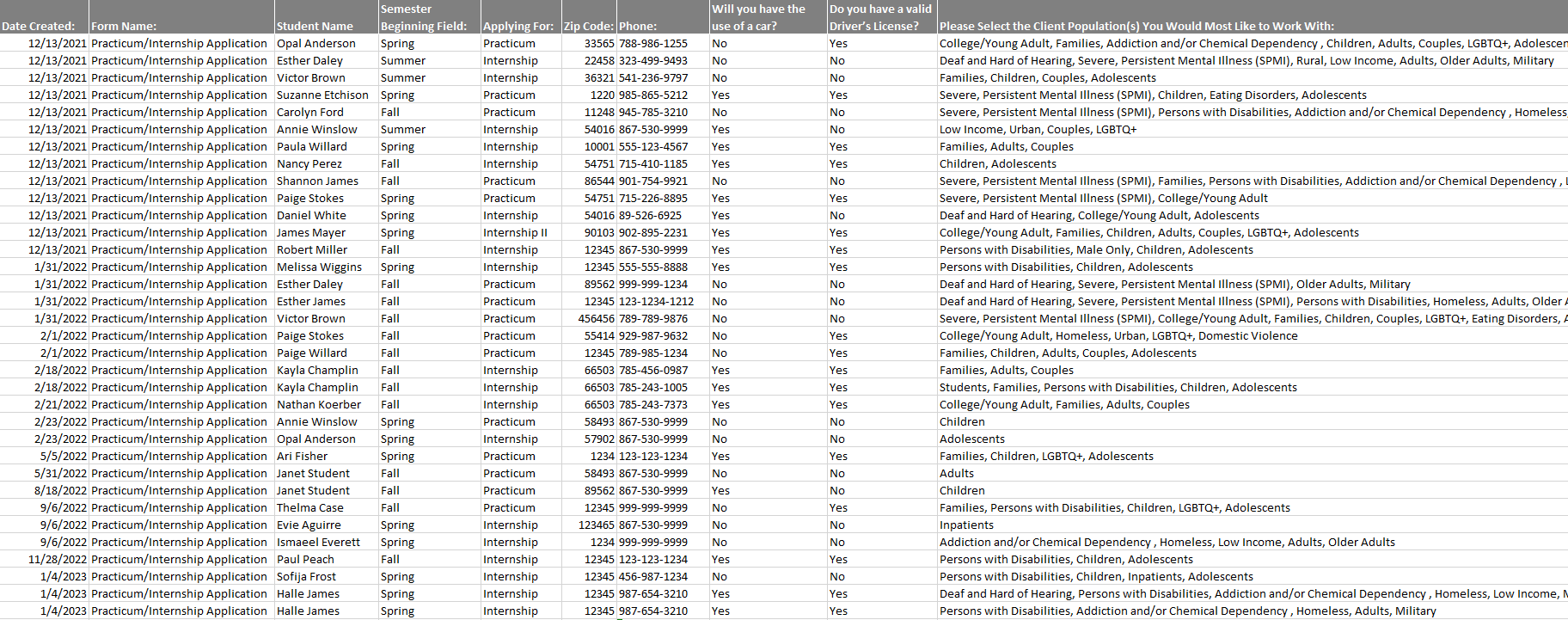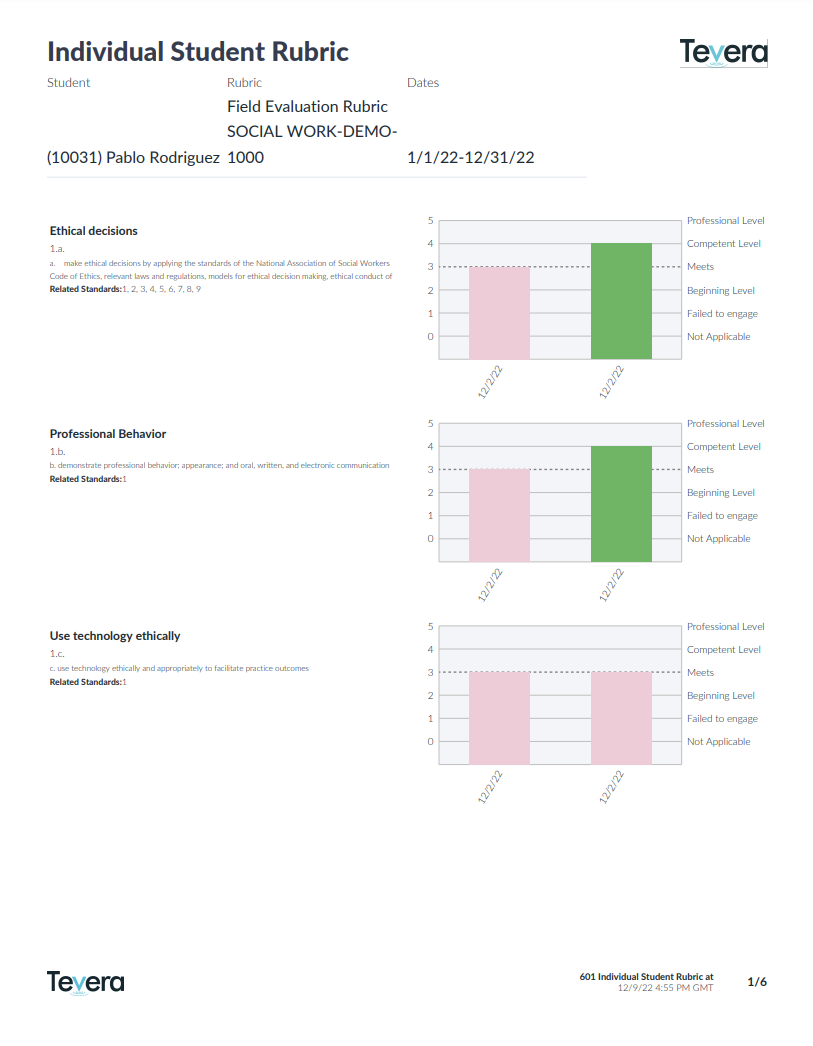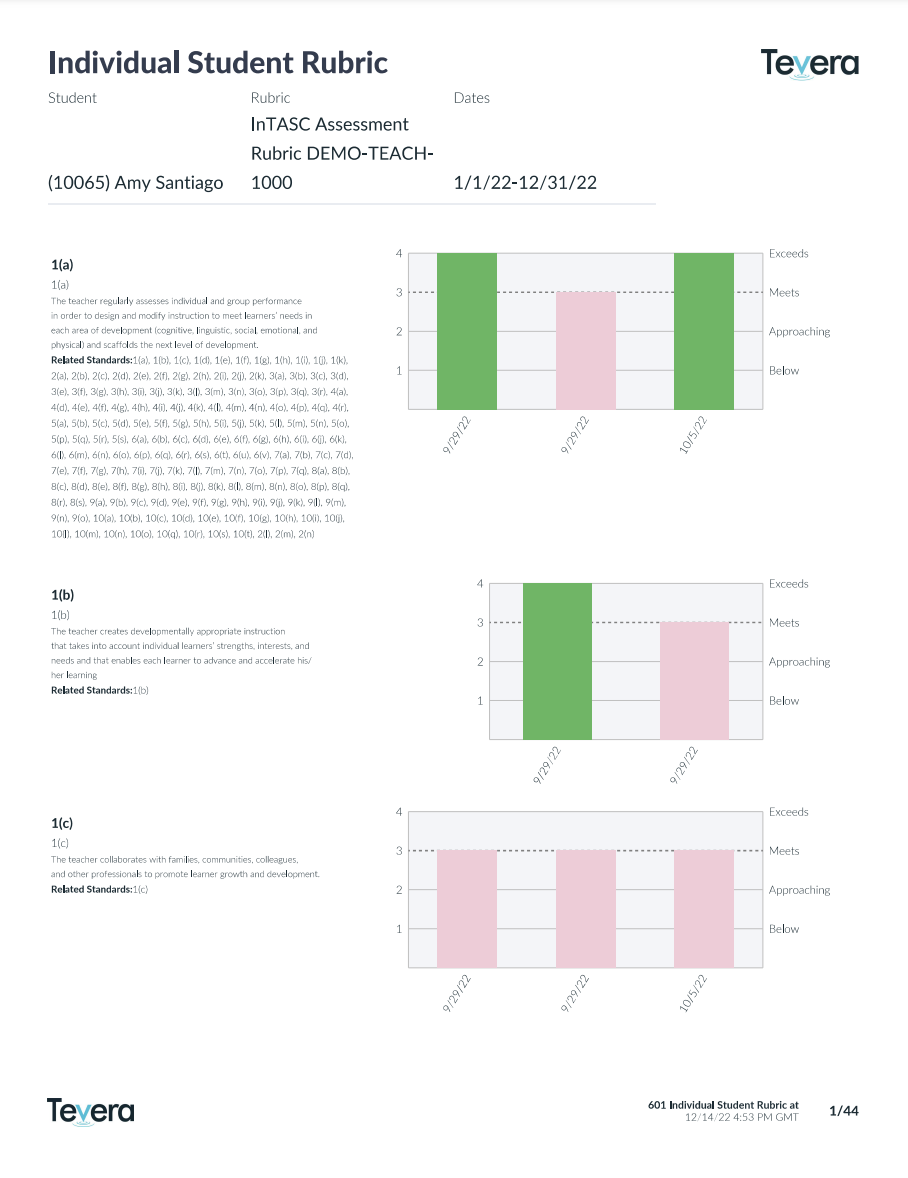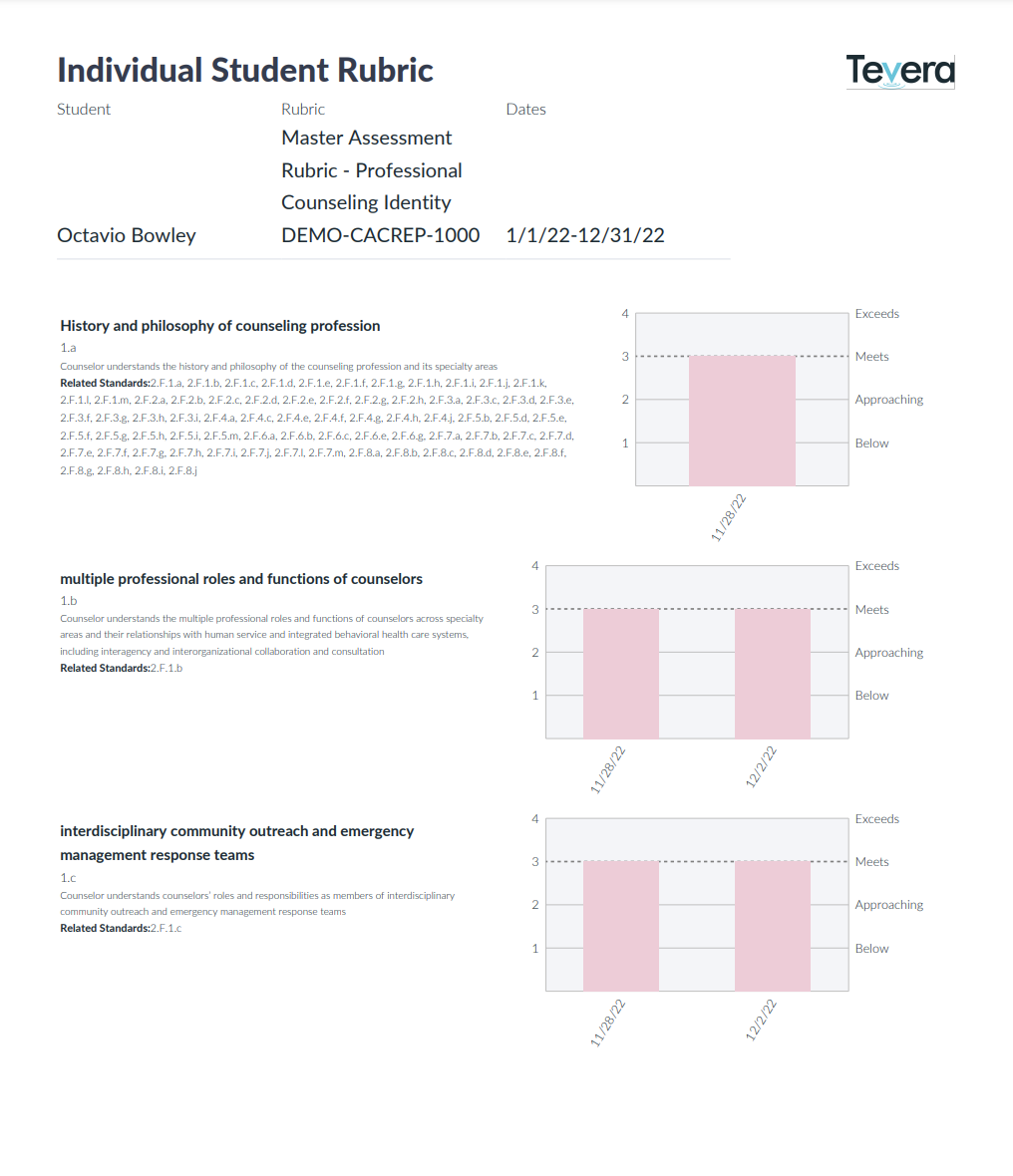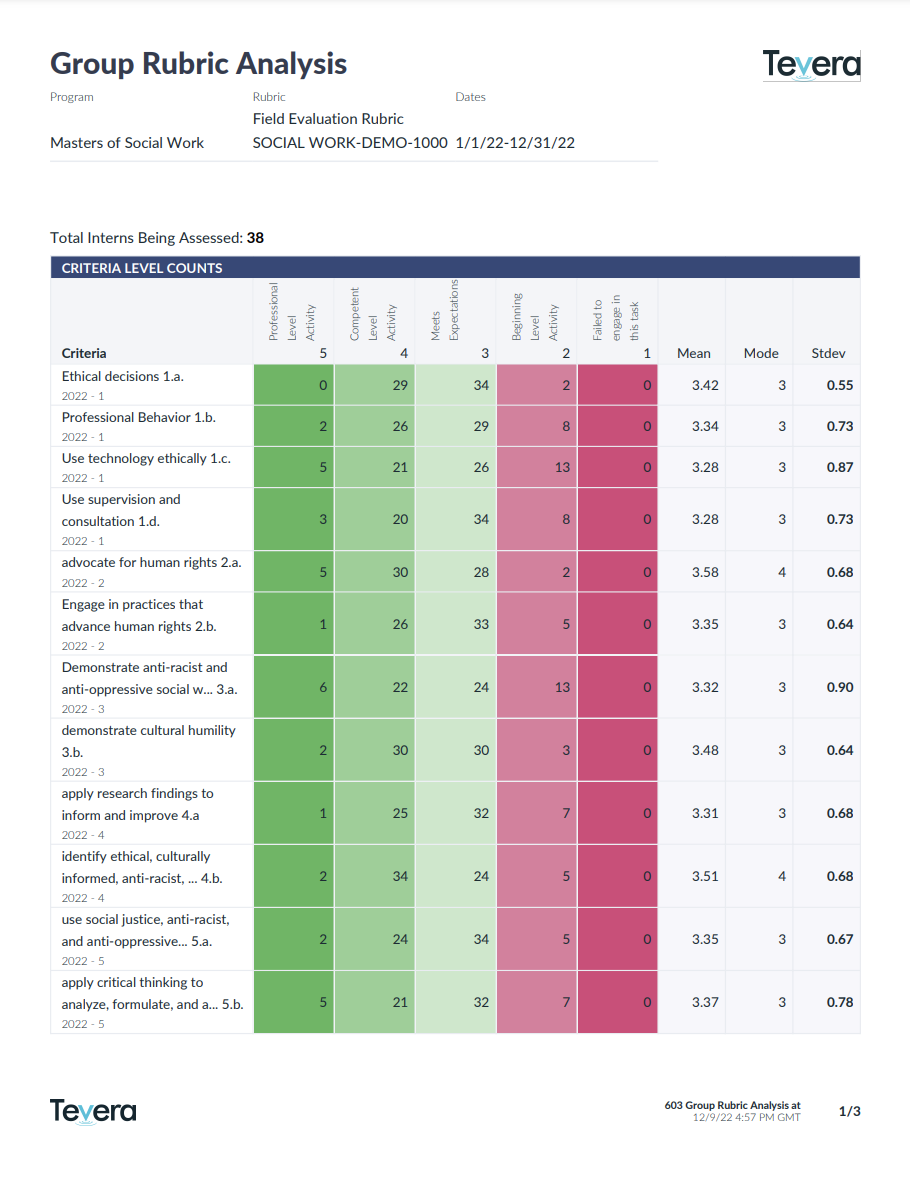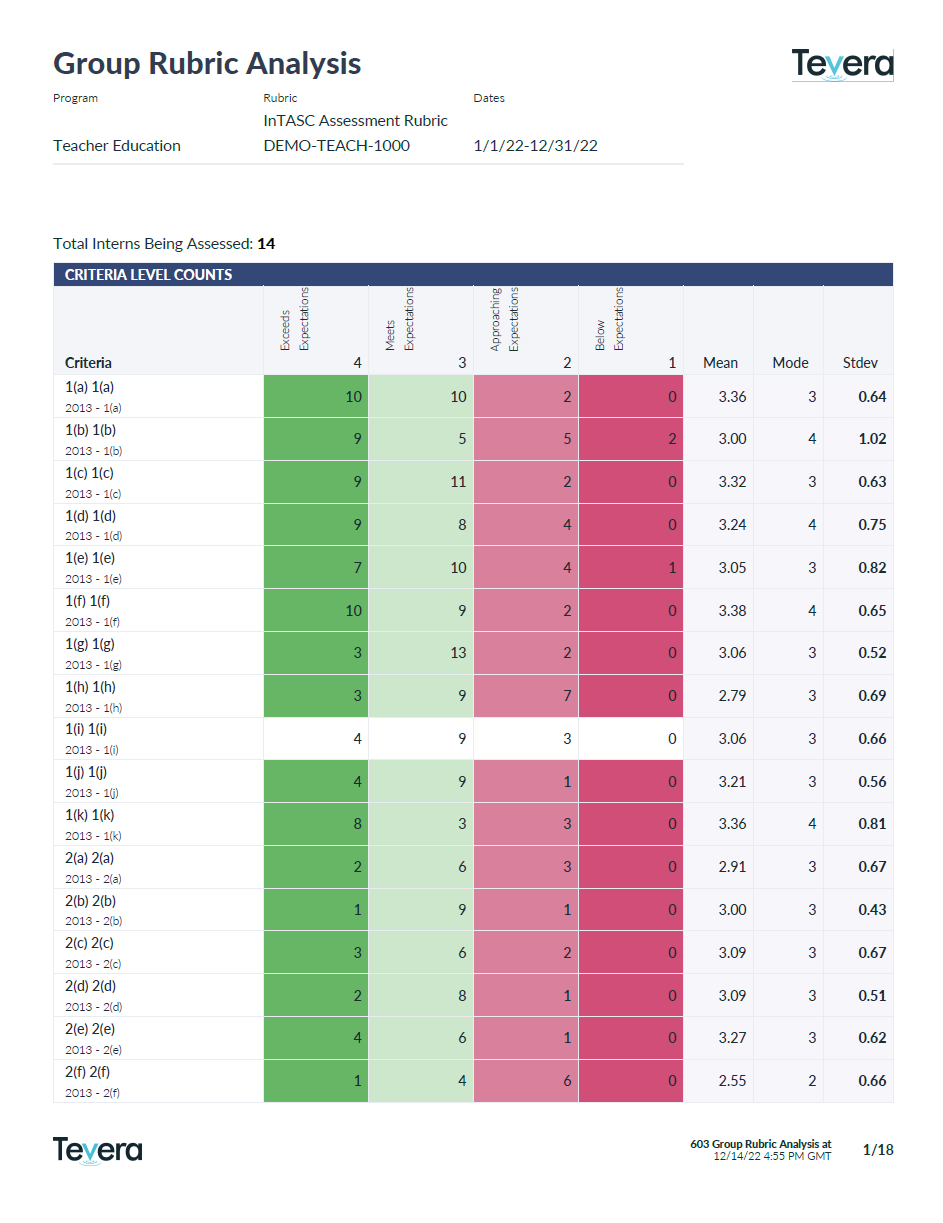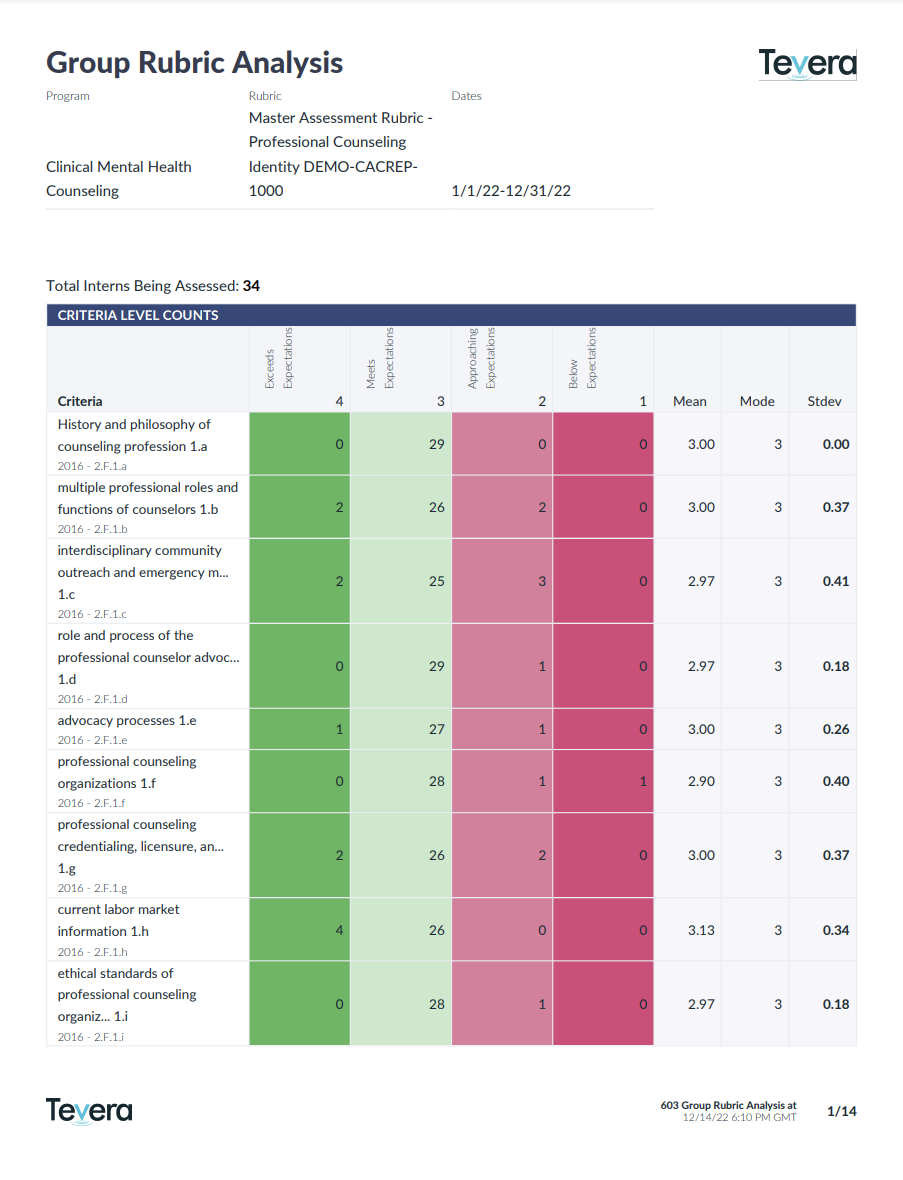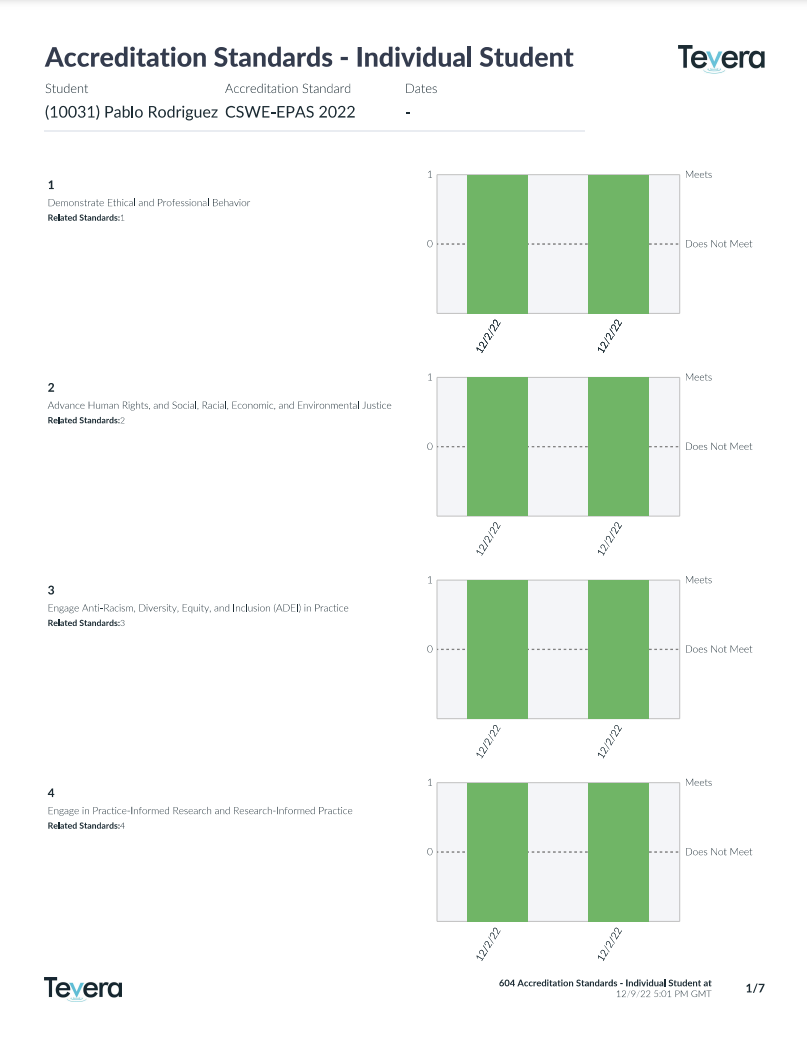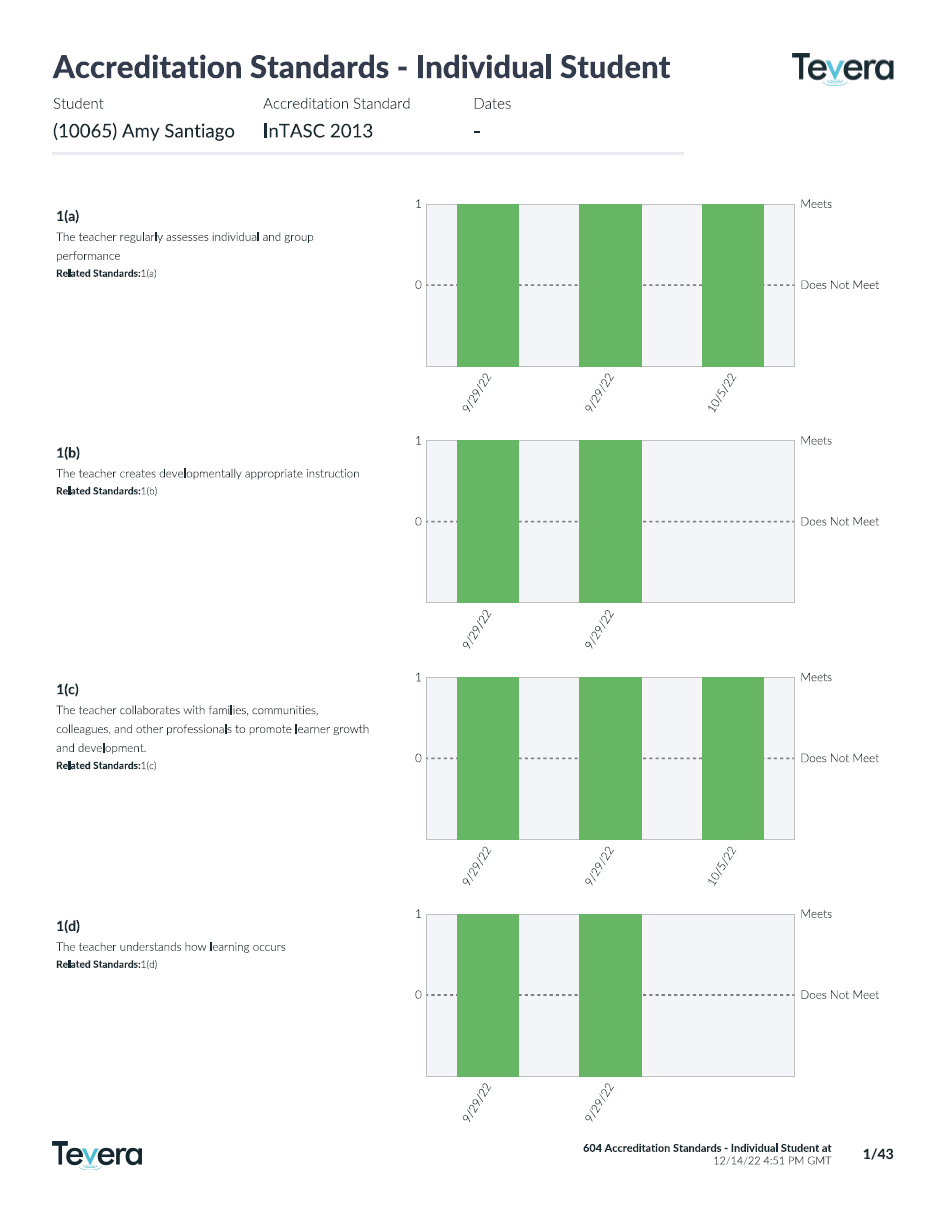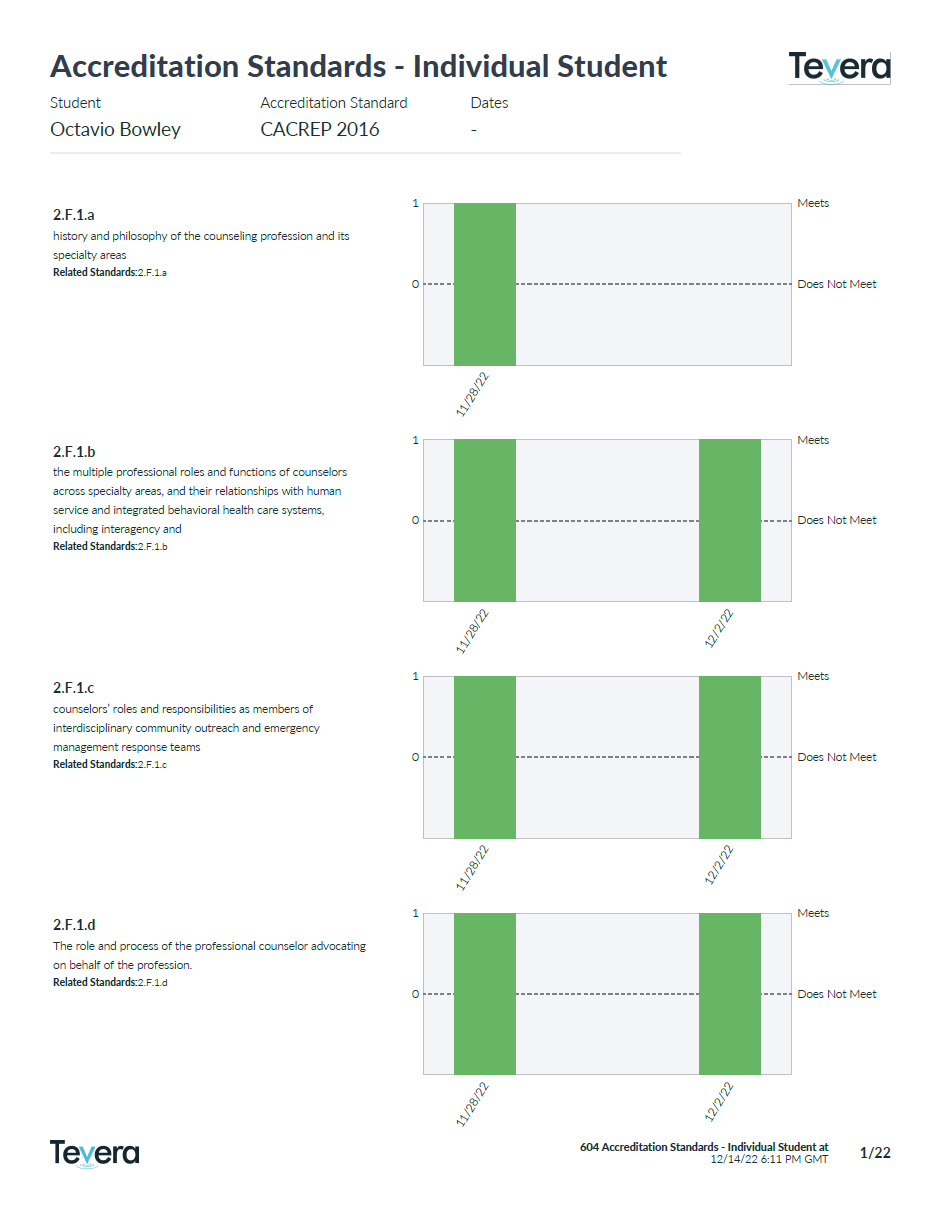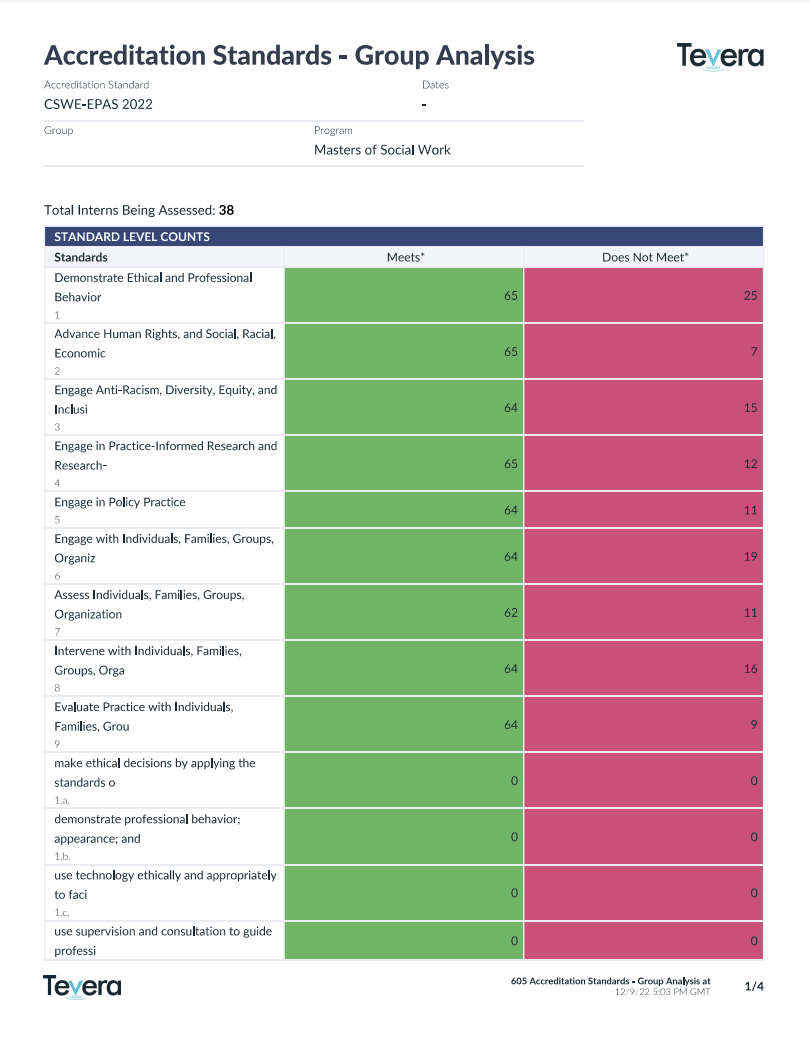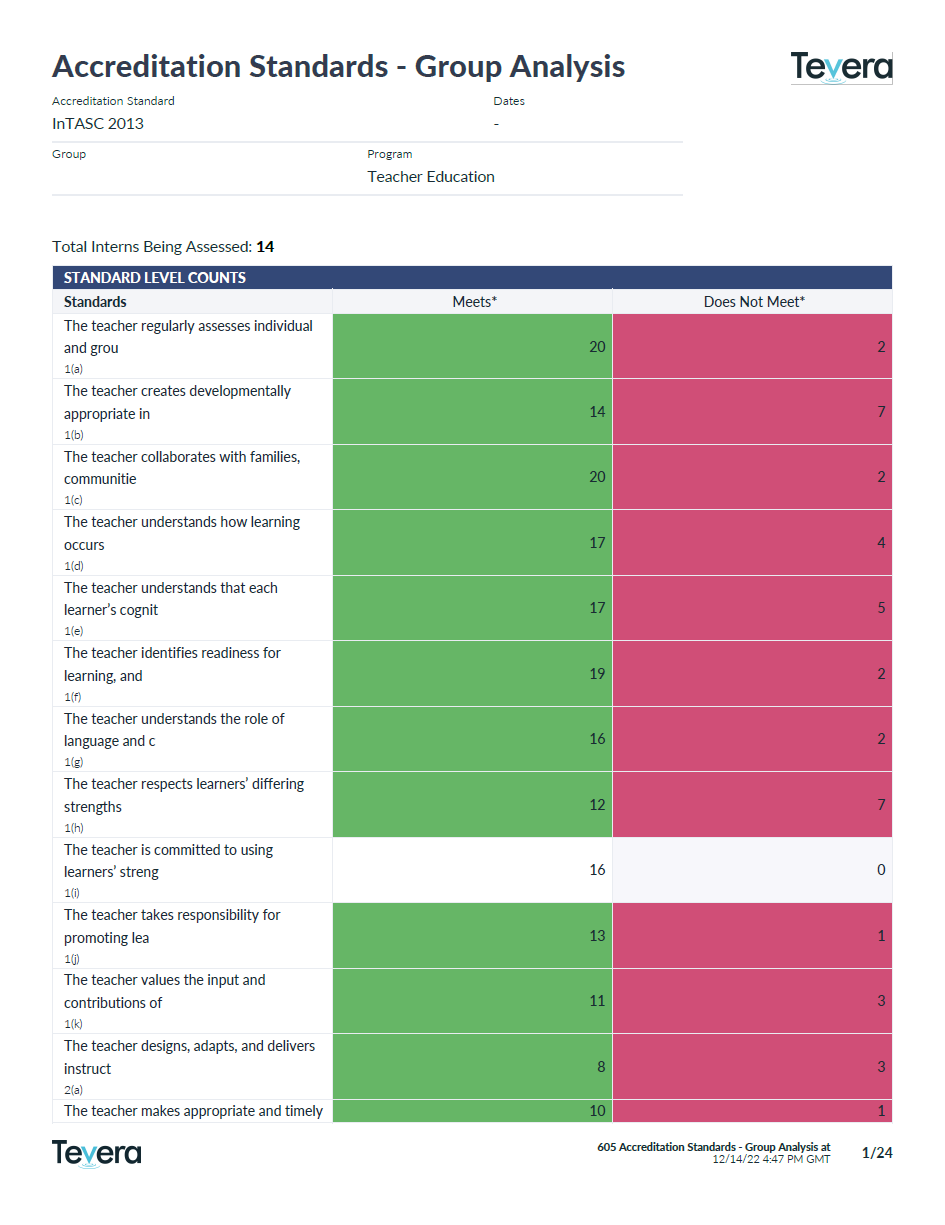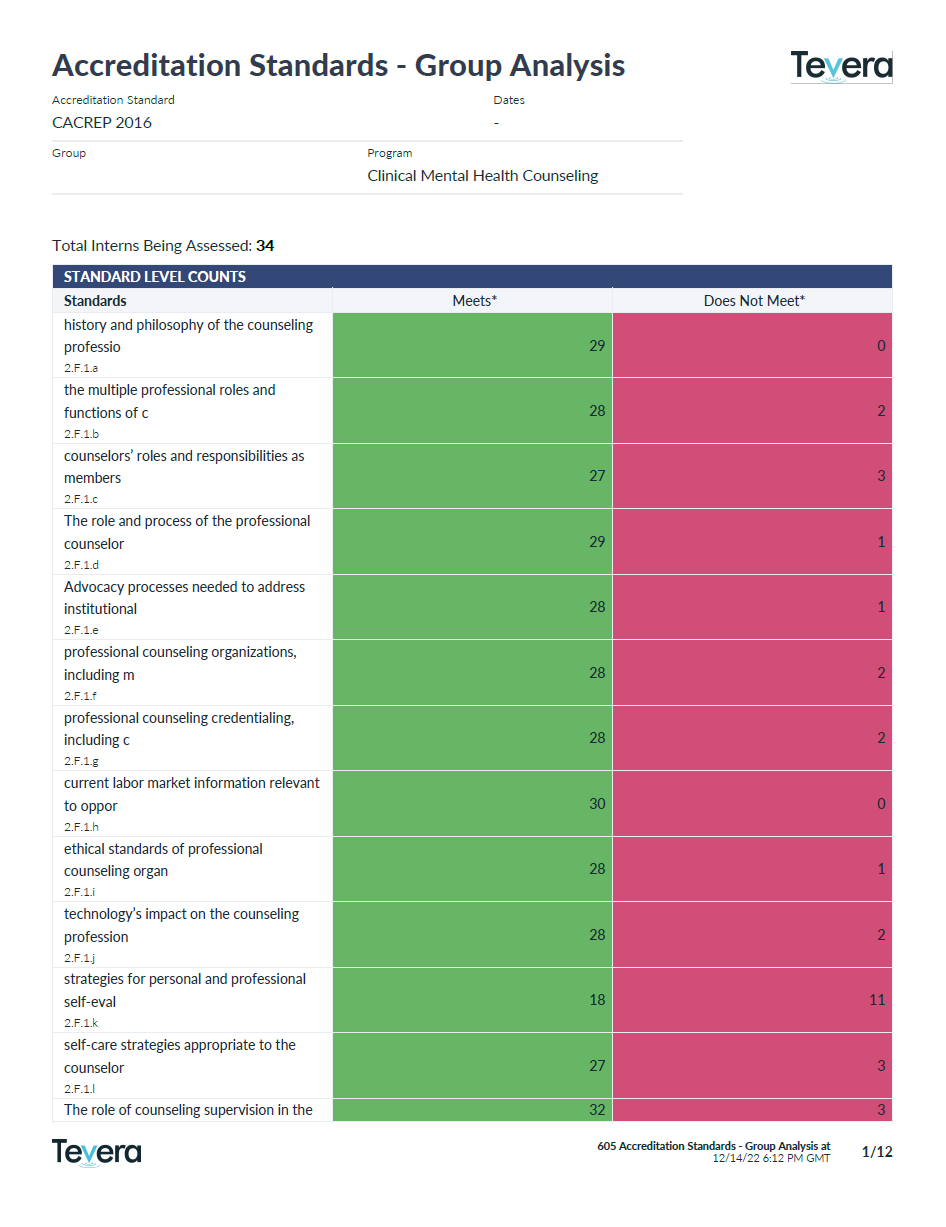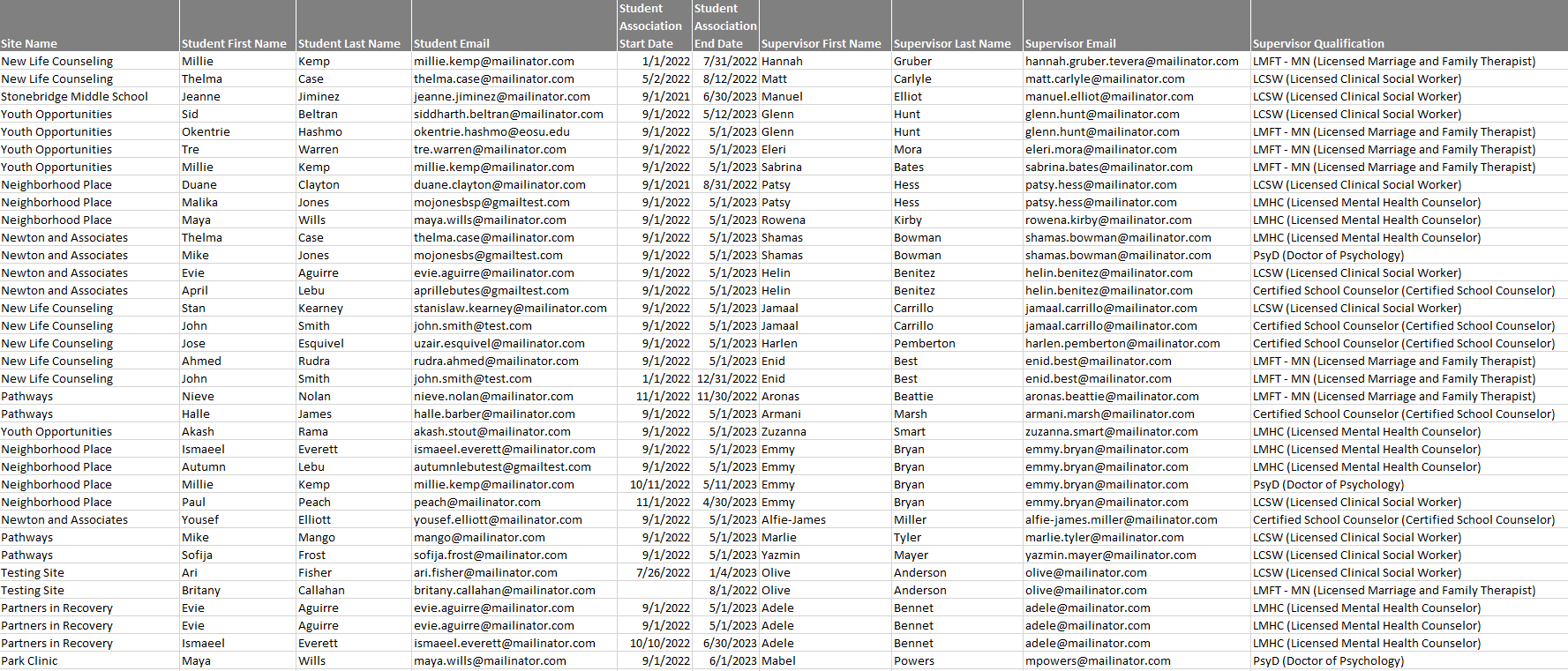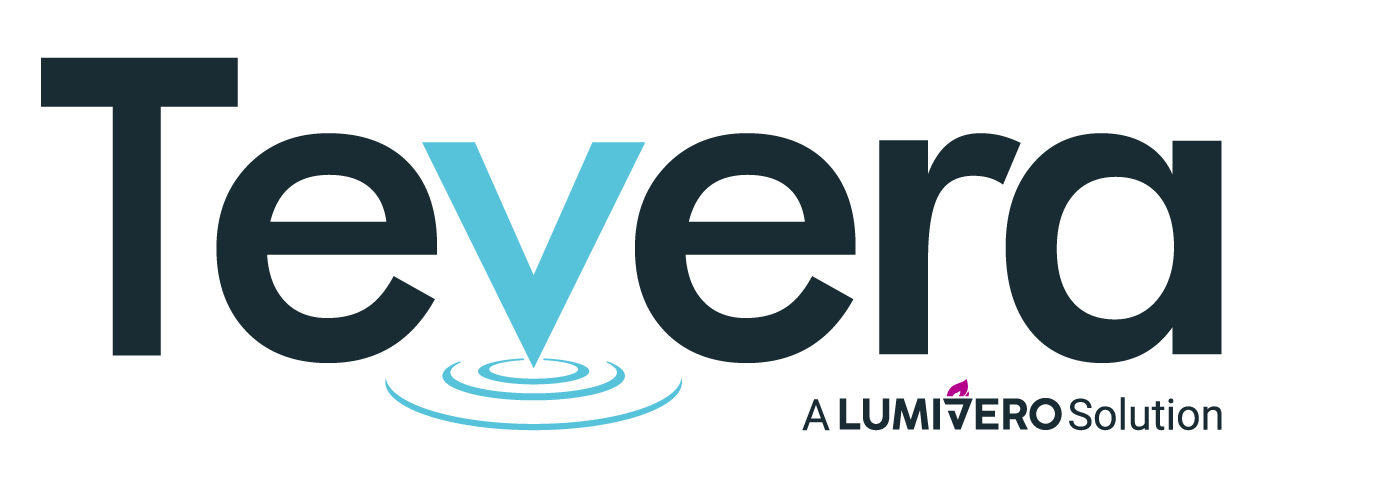Drive Program Outcomes
Drive student success, elevate program outcomes, and unlock program insights in one, intuitive location.

Unlock Valuable Insights that Power Continuous Improvement
In the competitive landscape of higher education, your program relies upon continuous improvement to keep an edge. However, without adequate insight into your program’s outcomes, your teams would lack the critical information you need to analyze and improve upon program outcomes year after year.
But what is the cost to gather these insights? If your program is managing student competency development across multiple systems, you’re likely investing significant time and resources to aggregate dissimilar data at the end of each term or in preparation for each accreditation cycle.
Cut Hidden Costs with a Single System
The good news is that with Tevera, you can cut these hidden costs and augment your insights by centralizing your data in one cohesive system. Rather than laboring over data consolidation and analysis, you’ll have a platform that already has everything you need in one place, including insight-rich reports that tell your student success story to anyone and everyone.
Reporting Solutions Make Data Accessible When You Need It
After even one term with Tevera, your program will have accumulated vast amounts of data in the system so we’ve developed an array of reports to give your program the most comprehensive insights possible.
Form Reports
Generate reports that track student assignment progress, quickly access all program data across any form, and create easily digestible reports in just a few clicks.
Analyze all data stored in any electronic forms in Tevera for qualitative and quantitative program insights.
Field Placement Reports
Pull comprehensive reports on field placement information at the click of a button. View current and past student placement information for all students in your program, complete with placement start and end dates, site name, supervisor name and contact information, and supervisor qualifications.
Program Audit Reports
Generate reports that give you more insight into the activity in your Tevera instance. View a summary of communications sent throughout your program, a history of student purchase records, and review audits designed to expose gaps in your program’s setup so that you can be sure everything will function smoothly when your students get started in Tevera.
Export Capabilities
In addition to the slew of reports that can selectively pull out data related to forms, time tracks, and site placement information in Tevera, you can also export any data that is stored in a table to an excel spreadsheet. These tables include:
Staff and Student Information
Document Information
Site Information
Class Information
Trusted by Programs Like Yours
See what current Tevera members are saying about their experience.

